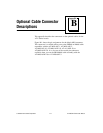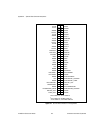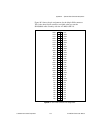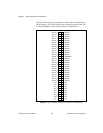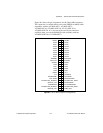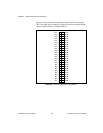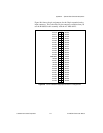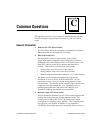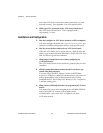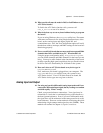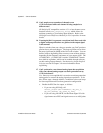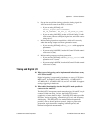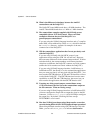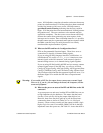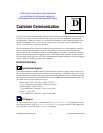
Appendix C Common Questions
AT-MIO/AI E Series User Manual C-2
National Instruments Corporation
that some AT E Series boards have settling times that vary with
gain and accuracy. See Appendix A for exact specifications.
4. What type of 5 V protection do the AT E Series boards have?
The AT E Series boards have 5 V lines equipped with a
self-resetting 1 A fuse.
Installation and Configuration
5. How do I configure an AT E Series board on an EISA computer?
You must configure the board with DAQCONF or WDAQCONF; you
cannot use an EISA configuration utility to configure the board.
6. How do you set the base address for an AT E Series board?
Under the AT E Series device option, there is a field for base I/O
address; type in the desired base I/O address. 0x180, 200, 220, 240,
280, and 300 are typical base addresses.
7. What jumpers should I be aware of when configuring my
AT E Series board?
The AT E Series boards do not contain any jumpers; they are also
switchless.
8. Which National Instruments manual should I read first to get
started using DAQ software?
If you are using LabVIEW, Chapter 1 of the LabVIEW Data
Acquisition VI Reference Manual is the best place to get started. If
you are programming with NI-DAQ function calls or using
LabWindows/CVI, the NI-DAQ User Manual for PC Compatibles
is the best starting place.
9. What version of NI-DAQ must I have to program my AT E Series
board?
You must have version 4.9.0 or higher for the AT-MIO-16XE-10
and AT-AI-16XE-10, version 4.8.0 or higher for the
AT-MIO-16E-1, and version 4.6.1 or higher for all other
AT E Series boards.



